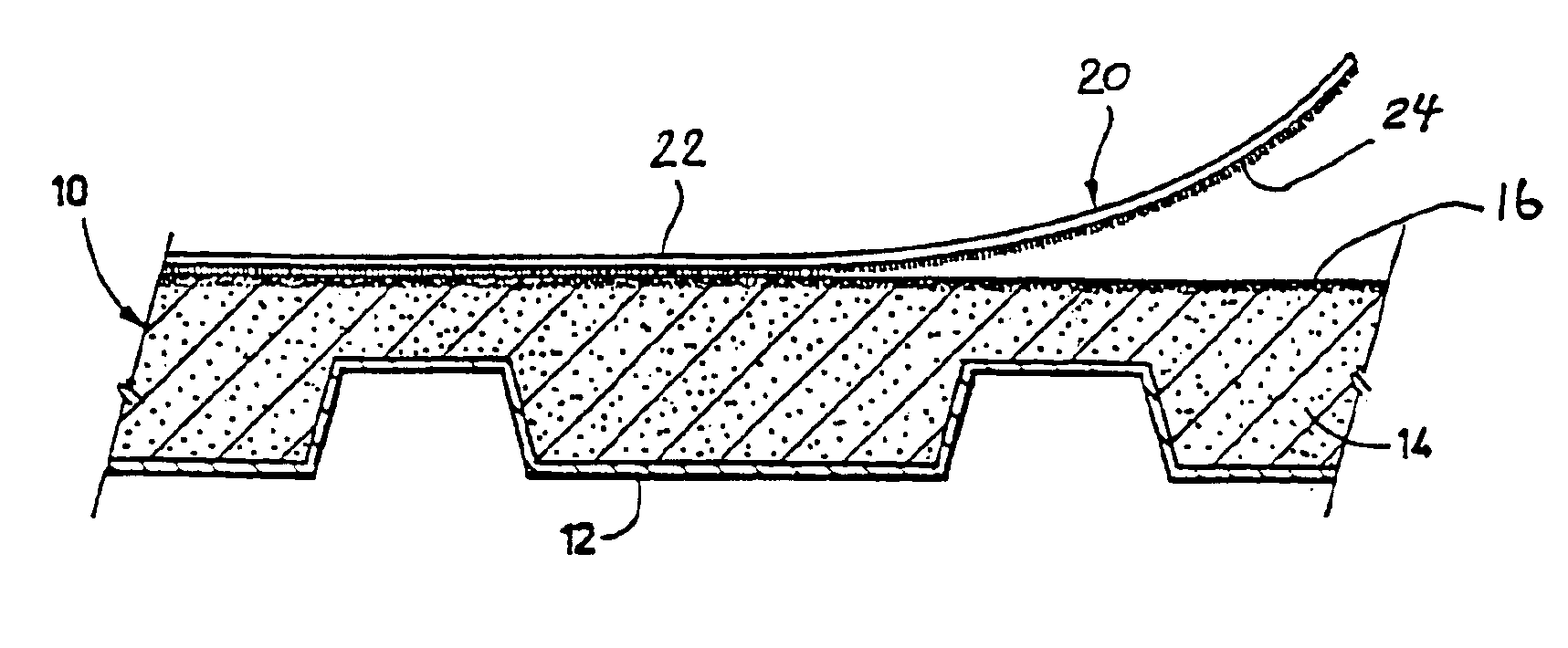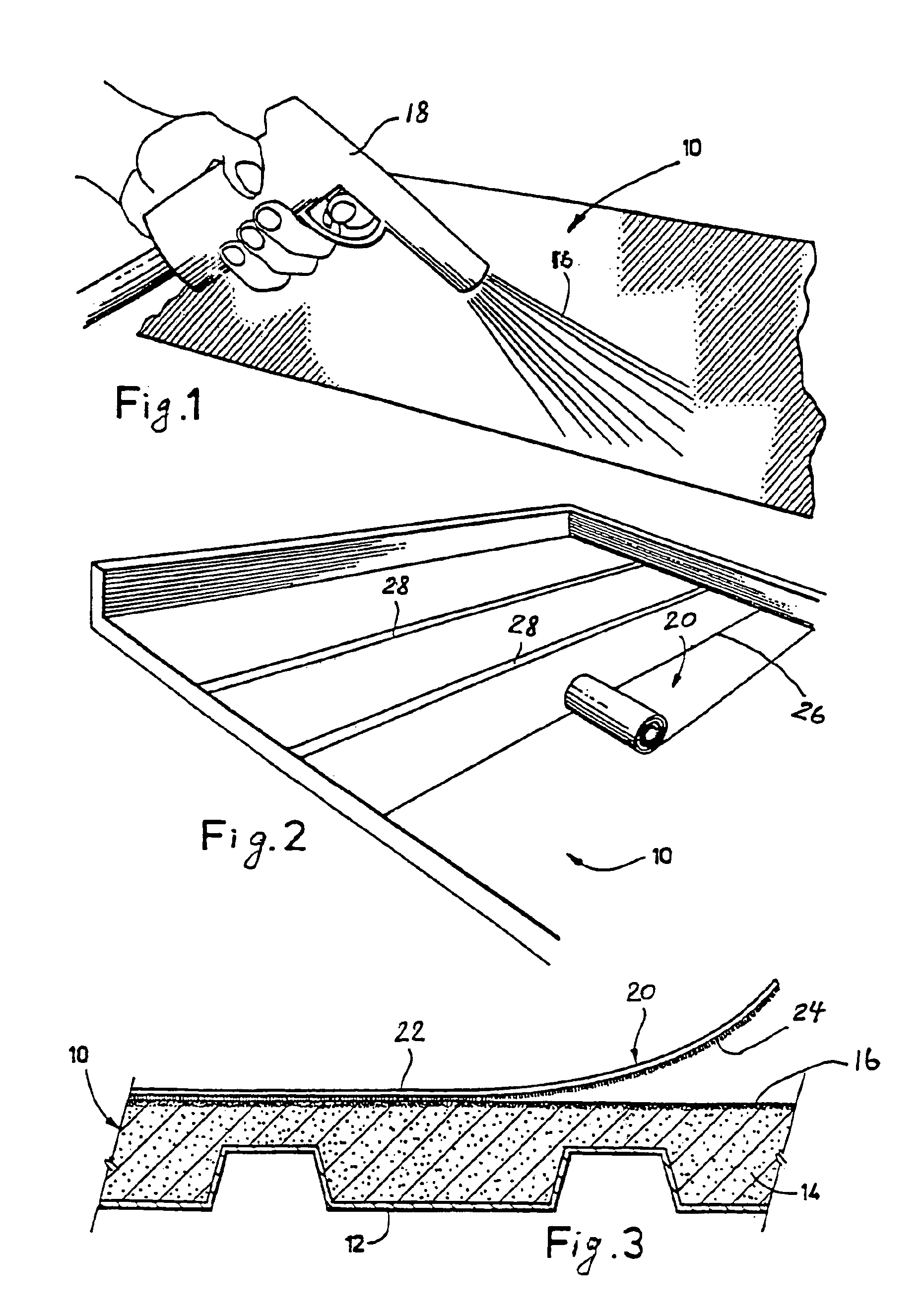Non-cellular adhesive for composite roof structure
a composite roof and non-cellular adhesive technology, applied in the field of composite roof structures, can solve the problems of slow initial set and relatively slow subsequent final cure, and achieve the effects of reducing labor and time spent on membrane seams, preventing stress on membrane seams, and being easy to control
- Summary
- Abstract
- Description
- Claims
- Application Information
AI Technical Summary
Benefits of technology
Problems solved by technology
Method used
Image
Examples
Embodiment Construction
[0014]The preferred embodiments of the present invention will now be described with the reference to accompanying drawings. Typically, the roofs hereof are applied to an otherwise conventional roof substrate 10 which may include metal decking 12 and a layer of insulated foam 14. In preparing the substrate, the upper surface thereof should be clean, smooth, dry and free of grease, any sharp edges, fins, loose and foreign materials. The temperature of the roof substrate 10 should be 20° F. or above. Although a metal / insulated foam substrate has been illustrated, it will be appreciated that the invention is not so limited. Thus, the composite roof can be directly applied to plywood, chipboard, concrete, or smooth-surfaced built up roofs. The insulation used should be compatible with the adhesive system employed.
[0015]If the substrate is in the form of a ferrous metallic deck, such should be primed with an appropriate metallic primer. If a non-ferrous deck forms the substrate, it should...
PUM
| Property | Measurement | Unit |
|---|---|---|
| Length | aaaaa | aaaaa |
| Length | aaaaa | aaaaa |
| Time | aaaaa | aaaaa |
Abstract
Description
Claims
Application Information
 Login to View More
Login to View More - R&D
- Intellectual Property
- Life Sciences
- Materials
- Tech Scout
- Unparalleled Data Quality
- Higher Quality Content
- 60% Fewer Hallucinations
Browse by: Latest US Patents, China's latest patents, Technical Efficacy Thesaurus, Application Domain, Technology Topic, Popular Technical Reports.
© 2025 PatSnap. All rights reserved.Legal|Privacy policy|Modern Slavery Act Transparency Statement|Sitemap|About US| Contact US: help@patsnap.com


